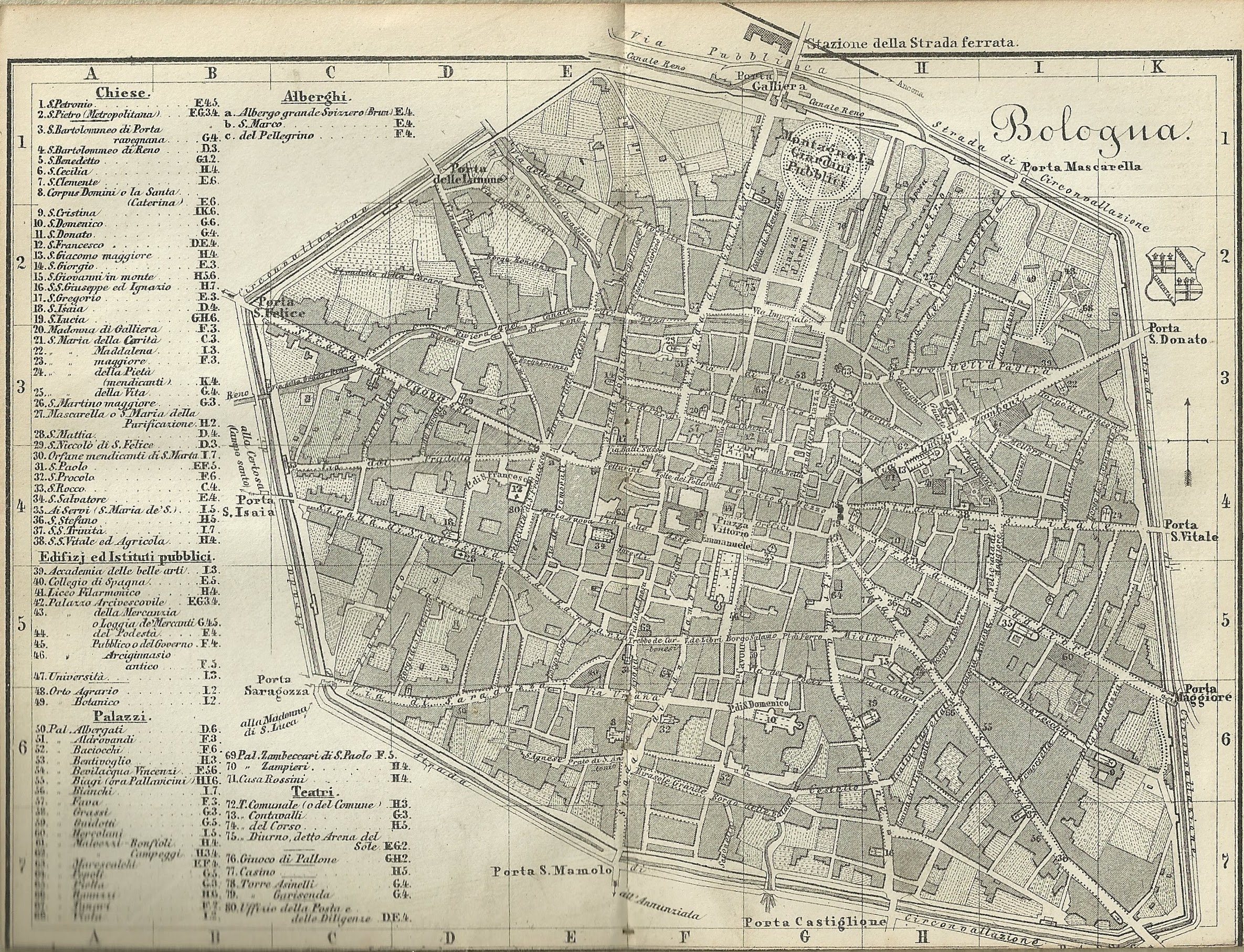BOLOGNA

In the post-Unification years, Bologna began its own process of emancipation and secularization from the previous papal ruling. University and the cultural life of the town flourished. However, compared to other cities, Bologna remained economically quite regressed. As a poor town, full of social contradictions, Bologna started a slow process of modernization of the infrastructures and of the industrial and manufacturing activities. The 1880’s, with the Emilian Exhibition (1888), represented the apex of the town’s expansion and had already acquired the infrastructures required to compete with the other Italian cities.
In particular, the liberal middle class, despite its own internal contradictions, contributed to the rebirth of the town, trying to fill the gap with the rest of the country and Europe. Bologna and its region changed and finally was connected to the rest of Italy: the railway station was inaugurated in 1859, marking the progress of modernity. New and wider streets were built (eg. via Farini, piazza Cavour, via Rizzoli). The tram system, launched in 1880, was the tangible sign of this modernisation.
The cultural life also provided a more diversified offer to satisfy the tastes and demands of the new middle class. With a rich artistic proposal, the small theatres were the true driving force of the cultural revolution in Bologna: their disengaged performances contributed to shaking off the Catholic imprint of the town. Moreover, in a broader sense, Bologna assumed a key role on a national level: it was the first town in Italy to stage a Wagnerian opera. The 1871 performances put Bologna in the circuit of the national premieres, and revealed its vocation to become the city of the future.